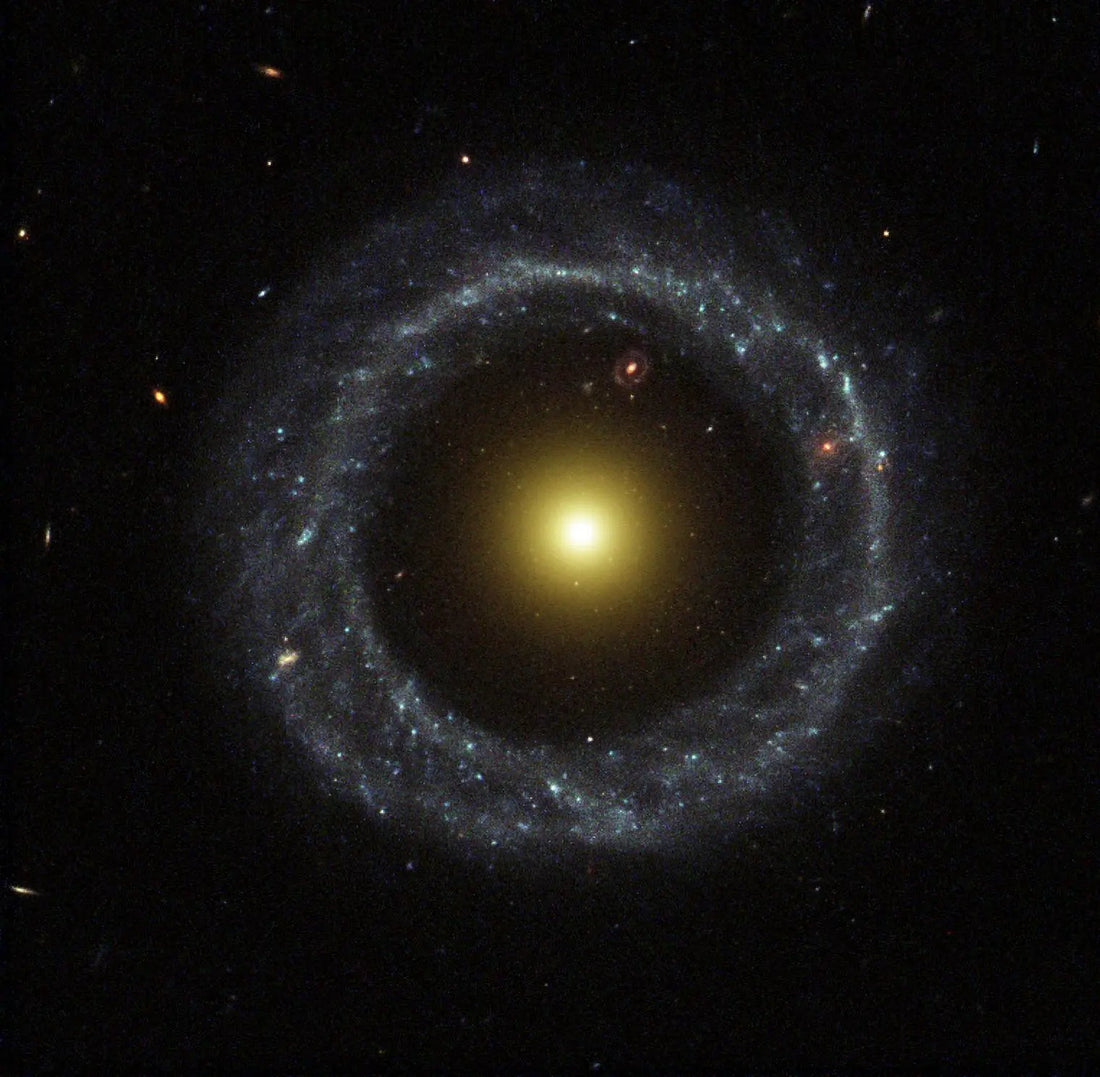
Hoag's Object: The First Stage of Galactic Evolution
Hoag's Object: The First Stage of Galactic Evolution
Imagine a galaxy so perfect it looks like it was drawn with a compass. Meet Hoag's Object: a cosmic fossil, a pristine record of a galaxy's first breath after a bang.
Discovered in 1950 by astronomer Arthur Hoag, Hoag's Object sits about 600 million light-years away, showcasing a nearly perfect circle of young blue stars orbiting an older, golden core. No spiral arms, no chaotic debris fields, no evidence of collisions. Just elegance and mystery.
Standard cosmology struggles to explain its precision and isolation. Yet in Cosmic Seed Theory (CST), Hoag's Object isn't an enigma—it's a natural and expected part of galactic evolution. In fact, it's the first clean stage in a galaxy's life cycle.
The Mystery of Hoag's Object
- Structure: A bright, older stellar core surrounded by a symmetric ring of newer stars.
- Gap: A vast, nearly empty 70,000-light-year-wide space separates the core from the ring.
- Isolation: No nearby galaxies, no tidal distortions, no merger scars.
Under CST, this is exactly what we expect from a pure galactic bang. When a supermassive black hole (a "Cosmic Seed") reaches a critical threshold, it undergoes a localized Big Bang, expelling material outward. The expelled matter forms a shockwave, cooling and igniting into new stars along a ring at the edge of the expansion front. Meanwhile, older stars closer to the center survive, forming the core.
The 70,000-light-year void? That's the aftermath of the outward shockwave, a gravitational freeze zone where material hasn't yet begun its long return inward. Over billions of years, gravity will slowly pull outer material back toward the core, setting the stage for the next cycle.
The First Step in a Galactic Life Cycle
Hoag's Object isn't a static structure. It's breathing.
Today, it sits in a quiet phase—fresh from its first bang, surrounded by a pristine ring. But over cosmic timescales:
- Material from the ring will drift inward.
- The central black hole will feed and grow again.
- A second bang will ignite, forming another ring.
- The galaxy will layer itself—cycle after cycle—growing naturally across billions of years.
This is galactic evolution according to Cosmic Seed Theory: not a chaotic, one-time event, but a rhythmic, regenerative process.
Why Hoag's Object Matters
- It matches CST predictions for structure, mass, and symmetry.
- It shows that galactic bang events are real, observable phenomena.
- It confirms that galaxies evolve through cycles of expansion and renewal, not one single explosion.
- It teaches us that galaxies aren't born fully formed — they grow through time, breath by breath.
"Hoag's Object isn't just rare. It's revealing. It's the Rosetta Stone of Cosmic Seed Theory—proof that the universe grows not through chaos, but through cycles of quiet, breathtaking precision."
